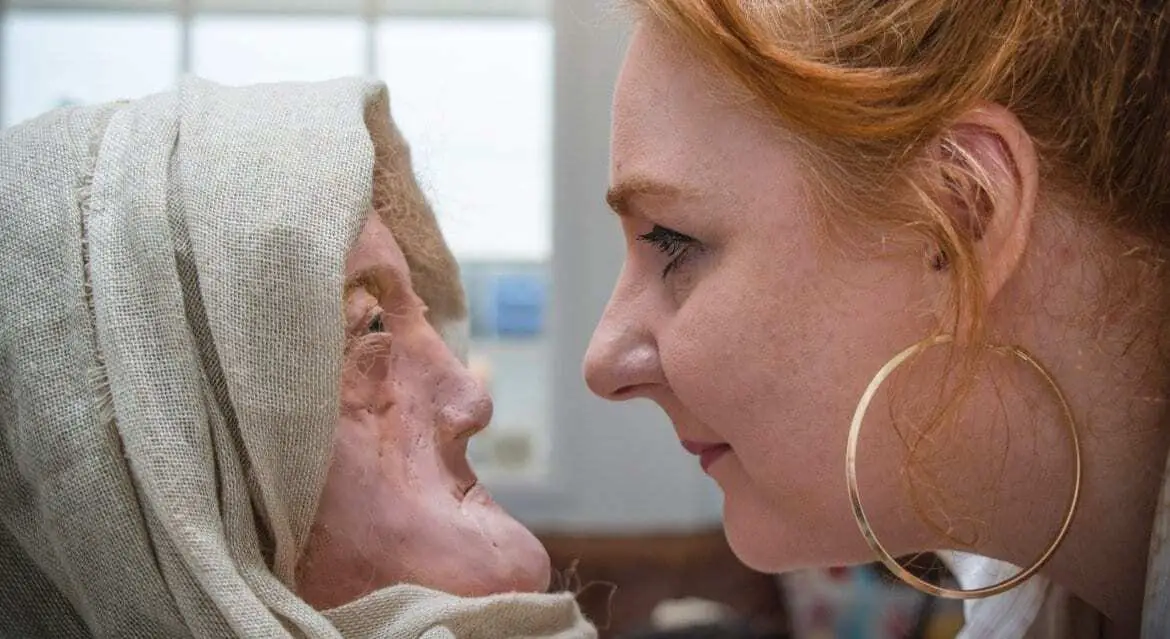A University of Dundee student has revealed the face of one of Scotland’s oldest druids, believed to have been more than 60 years old when she died during the Iron Age.
Karen Fleming, an MSc Forensic Art & Facial Identification student, has recreated the head of a woman believed to have been from Stornoway, on the Isle of Lewis.
The 3D wax reconstruction depicts a toothless female, nicknamed ‘Hilda’, believed to have been well into her 60s, an impressive feat itself. Karen says Hilda, although thousands of years old, displays many physical attributes that remain recognisable today.
Karen, from Edinburgh, said, “Hilda was a fascinating character to recreate. It’s clear from the skull she was toothless before she died, which isn’t too surprising considering the diet of folk back then but it was impressive how long she lived. A female’s life expectancy at this time was roughly 31 years but it is now thought that living longer during the Iron Age is indicative of a privileged background.
“It’s impossible to know for sure when she died as we were unable to carbon date the skull, but assuming the information in the journal from 1833 is correct, Hilda passed away anytime between 55BC to 400AD and was of Celtic origin. I think she looks like many older women I’ve met in my life and I’m proud of that.”
Painstakingly reproducing features in wax, Karen said this year’s heatwave almost melted Hilda before she had been brought back to life.
“It’s funny to say it now but I had to keep parts of Hilda, like her wax modelled ears, in the fridge for most of the summer. As a mature student who commutes from Edinburgh, I often had to keep her cool in the car, strapped up in the passenger seat. I’m sure that’s a sight passers-by won’t forget seeing.”
Hilda will go on display at this year’s Masters Show, one of Scotland’s most exciting displays of artistic talent. More than 80 students will showcase their work during the week, which runs from Friday 16 to Sunday 25 August.
Hilda was recreated from an ancient skull held at The University of Edinburgh’s Anatomical Museum and is described as one of six ‘Druids of the Hebrides’ skulls presented to the Phrenological Society of Edinburgh in 1833.
Entry to the Duncan of Jordanstone College of Art & Design Masters Show 2019 is free and more information can be found online.
The MSc Forensic Art & Facial Identification course began in 2007 and covers a wide range of subjects, notably facial anthropology and identification, such as two and three-dimensional facial reconstruction, craniofacial superimposition, post-mortem depiction, composite art and age progression.
Students on the course are taught by specialists from scientific backgrounds and experienced forensic art supervisors from the Centre for Anatomy and Human Identification (CAHID) and Duncan of Jordanstone College of Art and Design (DJCAD).
Potential careers in forensic art and facial identification exist within the police force and overseas law enforcement, as well as with private companies and in research.
Header Image Credit : University of Dundee





